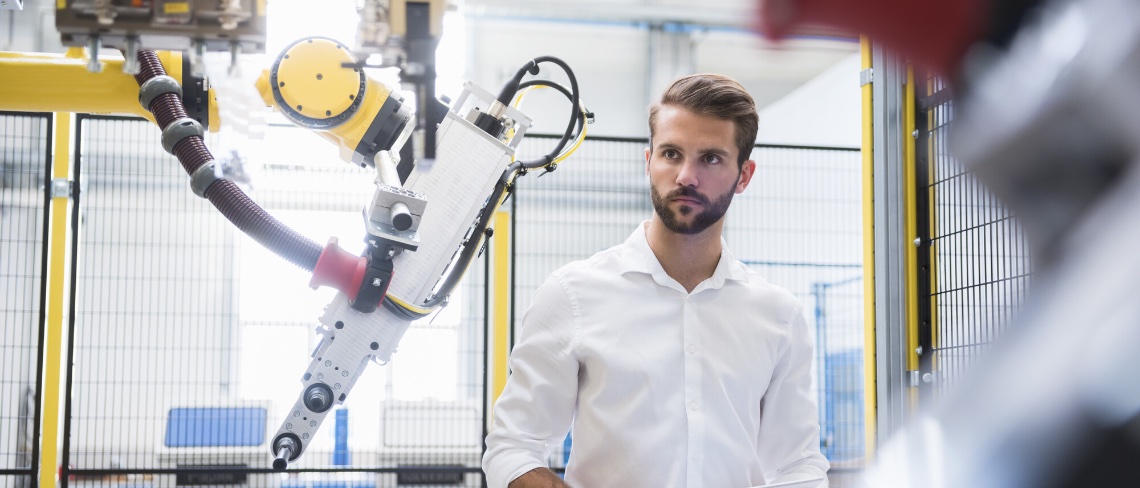Update: March 8, 2021
The video of Marco’s speech is now publicly available.
What will drive the industry, and what should decision-makers look out for? While many make predictions, we draw conclusions based on how innovative cyber-physical systems are already ushering in the next Automation Age. Indeed, Marco Cassis, President, Analog, MEMS and Sensors Group at ST, just gave a keynote at the 2022 International Solid-State Circuits Conference (ISSCC 2022), highlighting breakthroughs in sensors, AI, communication, and more. The presentation will be available publicly in a few days. In the meantime, we wanted to contextualize the new trends that the speech explores in relation to the “Next Automation Age”.
What Is the Next Automation Age?
The First Automation Age
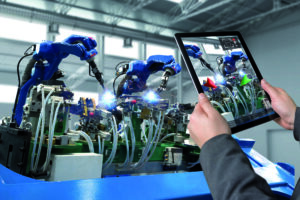
The concepts tackled by Marco are so broad and foundational we wanted to explore them more profoundly, starting with the notion of the Automation Age. A consequence of the Information Age, the Automation Age describes an epoch when machines began to perform complex tasks with little to no human interactions. The first Automation Age was possible thanks to global information systems and the computerization of production. During this era, automation transformed economies and societies. Manufacturing became more efficient, and the job market opened up to new talents. Put simply, automation was at the core of the third industrial revolution, and according to the World Economic Forum, the rate of automation will continue to increase significantly in the coming years.
The Next Automation Age
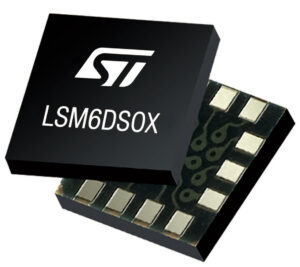
Marco’s keynote was highly symbolic because it demonstrated that we already live in the next Automation Age. Indeed, thanks to the confluence of technologies in what the industry coined cyber-physical systems (CPS), we are experiencing a new type of automation. Formalized in 2017, CPS are “smart systems that include engineered interacting networks of physical and computational components.”1 We encourage those less familiar with the concept to watch Marco’s presentation to learn more. In a nutshell, a CPS has sensors and actuators that interact with the world through a computing system featuring intelligence and networking capabilities.
The official definition of CPS we cite above leads many to ask how they differentiate themselves from IoT systems. The National Institute of Standards and Technology (NIST) realized it was an issue and offered various ways to distinguish the two2. Among the many interpretations, ST adopts the notion that cyber-physical systems represent a superset that includes IoT, among other things. Indeed, a CPS also provides control systems and machine learning applications mostly absent on traditional Internet of Things platforms. Hence, while IoT and CPS have many commonalities, a CPS extends beyond traditional IoT. In fact, it’s the control and AI capabilities of CPS that are, in part, responsible for the Next Automation Age.
Embedded AI at the Core of the Next Automation Age
The Advent of AI at the Edge
The ST keynote at ISSCC highlighted the many ways microcontrollers and sensors are bringing AI to the edge. Indeed, Marco outlined existing technologies that enable systems to automate complex decision-making processes. Hence, it provided a comprehensive overview supporting the many AI topics we tackle on the ST blog. Moreover, taking a step back, the talk is also an object lesson in the importance of adequately anticipating market trends.
The Benefits of Being First Years Before Anyone Else
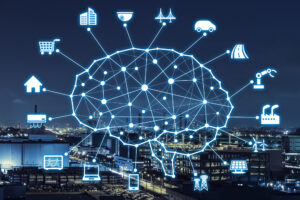
Today’s democratization of AI at the edge stems from the availability of mature tools. NanoEdge AI Studio and STM32Cube.AI for microcontrollers, or Unico GUI for the machine learning core of the LSM6DSOX MEMS, were unique in the industry when they came out. And since then, they’ve been receiving updates for years already. ST also offers open-source demos like FP-AI-FACEREC1 so developers can set up a machine learning application in minutes. Similarly, our condition monitoring solutions are reliable enough to work in industrial settings. We even offer a free curriculum designed by Professor William Kaiser, UCLA, on embedded machine learning and work closely with the open-source community through GitHub and our machine learning core repository.
The availability of reliable and feature-rich tools transformed workflows and the industry. In 2018, students that wanted to create embedded machine learning applications used ST devices and the assistance of a university professor in an academic setting. Today, the same projects only require a few clicks. In 2018, few knew how to use machine learning on embedded systems. In 2020, Siana, a design house and ST Partner, explained how its customers increasingly sought out machine learning applications and used them in real-world applications. More recently, we also saw how existing smartwatches or phones use ST machine learning solutions to determine when to activate the display or record physical activities at a fraction of the typical power consumption.
ST in the Context of the Rest of the Industry
The stories above show that our partners already benefit from AI at the edge because they’ve had the tools, documentation, and computing power necessary for a few years already. That’s also partly why Marco highlighted the Hype Cycle for Artificial Intelligence from Gartner3. On the one hand, analysts anticipate that edge AI will soon go through a trough of disillusionment. Most competing tools are recent, so developers are still learning to use them and figure out what to do with them. On the other hand, ST tools have been out for years. Hence, having anticipated the AI trends years earlier, our customers are productively using the technology in real-world products.
Heterogeneous Integration as the Driver of the Next Automation Age
What Does a Heterogenous Integration Look Like?
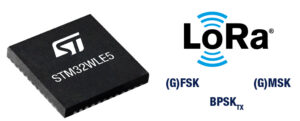
Marco’s keynote goes through many recent innovations in sensors, power devices, wireless connectivity, and more. The presentation is thus essential for anyone wishing to understand the fundamental technologies driving breakthroughs today. However, it’s easy to overlook the fact that instead of regurgitating a laundry list, Marco showed how these innovations built on one another to usher the next automation age thanks to the heterogeneous integrations that make CPS possible. For instance, today’s talk is not only about LoRWAN’s rise. It’s about a general-purpose microcontroller (STM32WL) with a LoRaWAN controller. It’s about how LoRa can work in conjunction with other protocols. In a nutshell, it’s about automation that would have been impossible a few years ago.
Heterogeneous Integrations Are Making CPS Possible
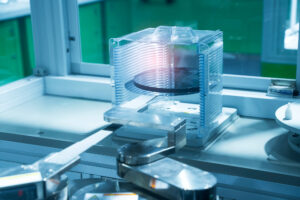
Cyber-physical systems aren’t new. The NIST officially defined them in 2017, but a working group was already tackling the issue in 2014. Even ST has been talking about them since 2018, when we published our first paper on the subject4. So why focus on them today? Because innovations are now enabling the impactful heterogeneous integrations at the heart of CPS. Many are familiar with heterogeneous computing, which traditionally involves using different processing cores. As foundries struggle with the physical limitations of smaller process nodes, heterogeneous computing helps keep Moore’s Law alive.
Marco’s speech highlights that the industry is experiencing a new Automation Age because it went from heterogeneous computing to heterogeneous integration. Indeed, ST isn’t only putting different Cortex-M cores onto the same die but doing something far greater in scope. As the keynote explained, we also integrate machine learning cores with environmental sensors to enable new machine learning applications. We are bringing new materials, such as GaN or SiC, to more power devices, which enabled the creation of new cellular networks. Our work on phase-change memory is changing automotive processors, and BCD (BIPOLAR-CMOS-DMOS) technology continues to allow devices with more complex and diverse functions.
The Need for Collaboration in the Next Automation Age
In a nutshell, ST is already witnessing the Next Automation Age but also trying the warn the industry about the importance of collaboration. As cyber-physical devices get smarter, the need to properly secure them is ever more critical. Furthermore, the advent of AI means that security measures must fend off even more powerful attacks. Similarly, the industry must rally around sustainability. The Next Automation Age must answer the climate crisis and offer solutions that embolden entire communities. Hence, Marco’s speech wasn’t a victory lap but a call to action based on what is and is to come.
- Framework for Cyber-Physical Systems: Volume 1, Overview, National Institute of Standards and Technology (NIST), https://doi.org/10.6028/NIST.SP.1500-201 ↩
- Cyber-Physical Systems and Internet of Things, National Institute of Standards and Technology, https://doi.org/10.6028/NIST.SP.1900-202 ↩
- “5 Trends Drive the Gartner Hype Cycle for Emerging Technologies, 2020.” www.gartner.com. ↩
- D. Cogliati, M. Falchetto, D. Pau, M. Roveri and G. Viscardi, “Intelligent Cyber-Physical Systems for Industry 4.0,” 2018 First International Conference on Artificial Intelligence for Industries (AI4I), 2018, pp. 19-22, doi: 10.1109/AI4I.2018.8665681. ↩
